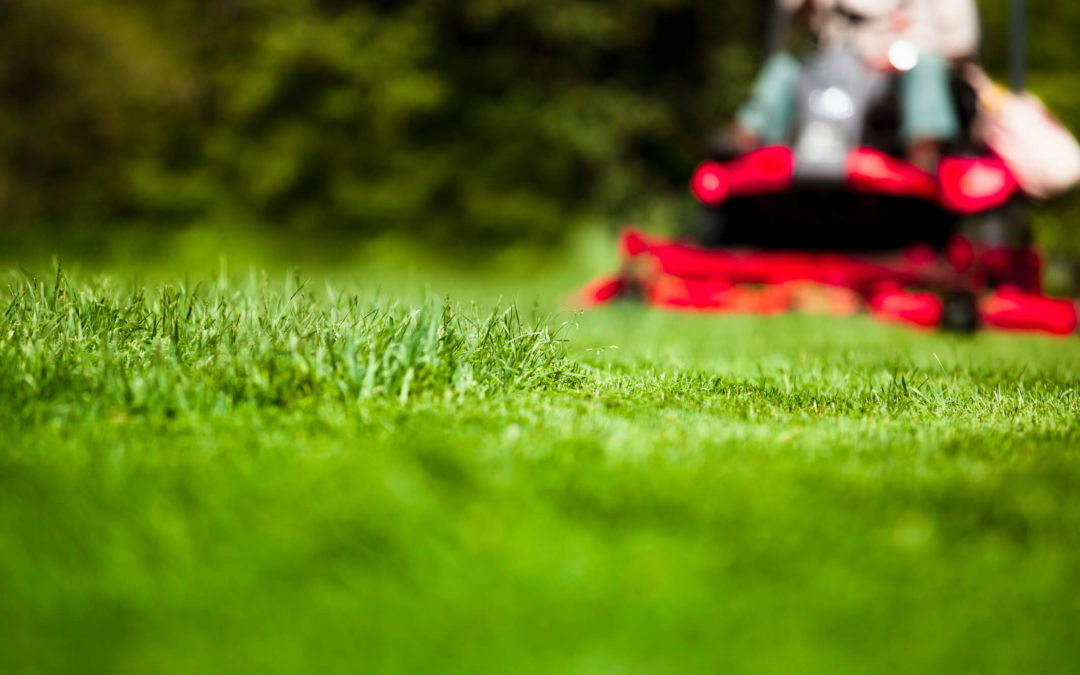Azure skies, swaying palm trees, and a vibrant rainbow of blooming annuals make Central Florida’s winters a breathtaking sight to behold. Alas, the area’s lawns need a bit of help to stay as gorgeous during the cooler months as less rainfall, cooler temps, and lower light intensity cause native grasses to go dormant and turn brown. However, it is easy to give your turf the boost it needs to stay green until springtime arrives.
Although, several things are needed to make this happen, which means that some extra time, money, and maintenance is required. If this doesn’t bother you, read ahead and get ready to have the most stunning lawn in the neighborhood!
Want Emerald Green Grass in the Winter? Follow These Helpful Tips.
Step 1: Overseeding is key. Ryegrass is the preferred species to keep your lawn lush because it remains green throughout the winter and continues to grow, then dies off once spring arrives.
Step 2: Prep for the seed. First, rake the lawn to remove any debris, then mow the grass a tad shorter than you do in summertime.
Step 3: Time to aerate! Aeration involves removing plugs of grass from the lawn to help air, water, and fertilizer reach the roots. This is accomplished with a tool called an aerator that can be rented from most home improvement stores. Not only will core aeration help your summer lawn stay green during the winter months and grow better in the springtime, but the holes keep the ryegrass seed from washing away and help it take root.
Step 4: Fill your spreader! You have successfully readied your lawn and it is time to spread the seed.
Step 5: Throw some food down. A fertilizer high in nitrogen is just what hungry lawns and germinating seeds crave. You will need to apply the fertilizer in the fall and winter, then again shortly before spring arrives.
Step 6: Gear up the sprinklers! Not only does irrigation provide much needed water to established lawns and freshly laid seed, it dissolves and activates the fertilizer. Just sprinkle the lawn evenly every morning and be careful not to create puddles.
Step 7: Set your irrigation timer. Your winter lawn needs to be watered for a short time each morning, so be sure to program your irrigation system properly. Avoid sprinkling the yard for long because puddles will form, which will cause fungus and disease to attack your grass.
Step 8: Tread carefully! Avoid walking on the lawn. You do not want to disturb the germinating seeds and risk damaging tender new grass. After your cool-season yard matures, you can once again enjoy the blades tickling your toes.
Step 9: No vacation for the mower. The one downside of having a gorgeous green lawn in the winter is that it requires mowing. While you don’t need to mow it nearly as often as you do during warmer weather, you will have to cut it shorter than you’re accustomed to because this helps the sunlight reach the base of the blades and keeps mold from growing. Just be careful not to scalp the lawn.
Last, but certainly not least, contact your county to find out if there are days you are prohibited from running your sprinklers. Some counties have conservation rules set in place to reduce water consumption by limiting which days citizens can irrigate their lawns, so it is imperative that you get in touch with your county to see if such restrictions apply to you.
Regarding your irrigation system, do a maintenance check every so often to make sure it’s working properly. If you’re not sure your system is running like it should, call us or complete our request service form and we’ll come take a look.
A Sight to Behold!
When your house looks like it’s surrounded by a cascade of emeralds, your neighbors will be green with envy! And you deserve it. You worked hard to have a healthy, vibrant lawn. However, the ultimate reward happens in the spring because your grass will be so thick and healthy that weeds will have trouble taking root and flourishing.
Remember, if you ever need assistance with sprinkler repair or irrigation in the Orlando area, make sure and give us a ring!

